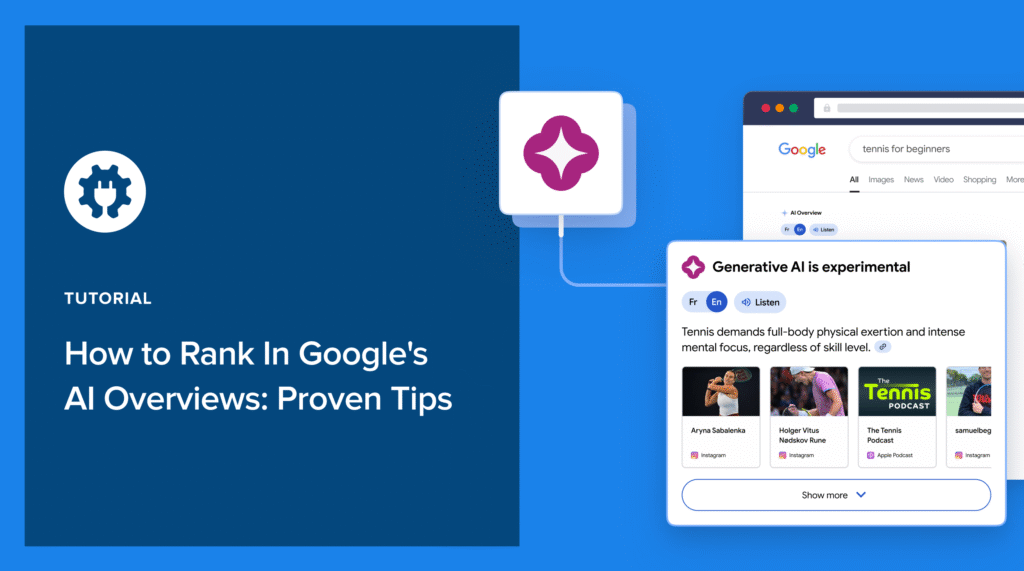Google’s AI Overviews are changing the way people find and read content.
Not too long ago, I noticed something strange. I had written a blog post that usually ranked well, but my traffic suddenly dropped. When I Googled the main keyword, I didn’t see my usual #1 spot. Instead, there was a big AI-generated summary box at the top of the page. That’s when it hit me: traditional SEO isn’t enough anymore.
Now, Google’s AI is pulling information from multiple websites and summarizing it at the top of search results. If your content isn’t being picked up by AI Overviews, it could get buried—even if it’s great.
The good news? You can actually optimize your content to show up in these AI Overviews.
In this post, I’ll walk you through 12 proven tips to help your content stand out, get picked up by Google’s AI, and stay competitive in this new search landscape.
In This Article
- What Are Google AI Overviews?
- Why Ranking in AI Overviews Matters
- 12 Proven Tips to Rank in Google's AI Overviews
- 1. Use the Right WordPress SEO Plugin
- 2. Optimize Your Content With LLMs.txt
- 3. Answer Specific, Intent-Focused Questions
- 4. Target Long-Tail and Niche Keywords
- 5. Optimize for Generative Engine Optimization (GEO)
- 6. Add First-Hand Expertise and E-E-A-T Signals
- 7. Use Structured Data (Schema Markup)
- 8. Keep Your Content Fresh and Updated
- 9. Write in a Natural, Conversational Tone
- 10. Build Topical Authority
- 11. Earn High-Quality Backlinks
- 12. Increase Your Brand Visibility Across the Web
- Rank in Google’s AI Overviews and Win at AI SEO
- Ranking in Google AI Overviews: Your FAQs Answered
What Are Google AI Overviews?
Google AI Overviews (AIOs) are AI-generated summaries that show up at the very top of the search results. Instead of sending you to one specific website, Google uses artificial intelligence to scan multiple pages, pull key information, and generate a comprehensive answer.
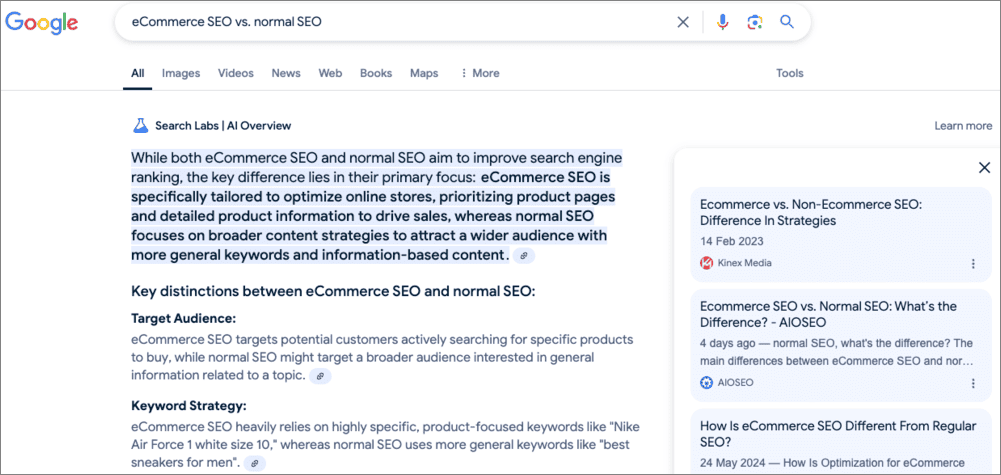
In simple terms, it’s like Google does the reading for you and then hands you the highlights.
For users, AI Overviews are incredibly convenient. They get answers fast, without having to dig through multiple links.
But for website owners, it’s a different story. If Google answers a question directly in the AI Overview, users may never click through to your site, even if your content is the one Google used to build the answer.
However, being cited in an AI Overview still offers immense value. It establishes your brand as an authority and a trusted source in Google's eyes.
That’s why it’s more important than ever to optimize your content strategically for AI Overviews. Instead of being left behind, you want your site to be part of the answer—and ideally, get credit in the AI Overview itself.
Why Ranking in AI Overviews Matters
Getting featured in Google AI Overviews can be a game-changer for your website and business. Since their rollout in May 2024, 63% of businesses have reported a positive impact on their organic traffic, visibility, or search rankings from Google AI Overviews.
Here are some reasons why ranking in AIOs is such a big deal:
1. More Visibility (Right at the Top!)
AI Overviews appear above the regular blue links you’re used to seeing in Google search. That means if your content is included, it’s front and center, right before your competitors.
Think of it like jumping to the front of the line at a concert. More people will see your content without having to scroll. That kind of prime real estate is hard to beat.
Example: If someone searches “how to clean a DSLR camera,” and Google’s AI shows your answer in the summary box, you’re instantly visible—even if you’re not ranked #1 in the regular results.
Fun fact: Research shows that AIOs and the featured snippet take up over 75% of the screen on mobile devices. This makes AI Overviews prime real estate for online visibility.
2. Instant Authority and Credibility (Google Just Endorsed You)
When Google’s AI chooses to include a snippet of your content, it’s basically saying, “This person knows what they’re talking about.” That kind of trust boost is hard to earn—and super valuable.
Readers are more likely to believe and follow advice in AI Overviews. It positions your brand or blog as an expert source, even if it’s their first time hearing about you.
3. First-Mover Advantage (Get In Before Everyone Else)
AI-generated search results are still fairly new. Not everyone is optimizing for them yet, which gives you a head start. By taking steps now—like adding schema, answering common questions, and setting up your LLMs.txt—you’re putting yourself ahead of the pack.
Think of it this way: It’s like the early days of mobile-friendly websites. The brands that adapted early won big when the shift happened. The same opportunity is here with AI Overviews. Don’t wait until everyone’s doing it.
Together, these three benefits—visibility, credibility, and early momentum—can help you grow your traffic, authority, and brand faster than traditional SEO alone.
12 Proven Tips to Rank in Google's AI Overviews
1. Use the Right WordPress SEO Plugin
One of the first steps to ranking in Google’s AI Overviews is to use the right SEO tool. For WordPress users, there’s no better plugin than All In One SEO (AIOSEO).
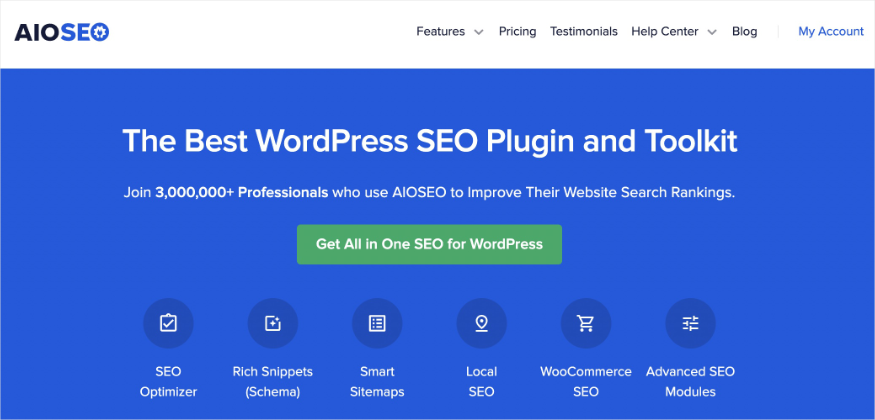
AIOSEO is a powerful, easy-to-use SEO plugin with over 3 million active users. Because it’s regularly updated, you can rest assured that the plugin stays up to date on changes in SEO best practices and WordPress versions. It also has features that can help you rank in AI Overviews, including:
- Cornerstone Content: Easily build topic clusters and enhance your topical authority and semantic SEO strategy.
- AI Writing Assistant: Use the power of artificial intelligence (AI) to optimize your content for better search rankings.
- Author SEO: Boost your Google E-E-A-T signals right in WordPress, giving you an edge over competitors.
- Advanced Robots.txt Generator: Easily generate and customize your robots.txt file for better crawling and indexing.
- TruSEO On-Page Analysis: Makes it easy to spot on-page SEO issues and gives recommendations for fixing them.
- Next-Gen Schema Generator: This no-code schema generator enables users to generate and output any schema markup on your site.
- Link Assistant: Powerful internal linking tool that automates building links between pages on your site. It also gives you an audit of outbound links.
- And more
We’ll look at features that specifically help with ranking in AI Overviews in the sections below.
Furthermore, AIOSEO is packed with features to help you improve your local SEO, on-page SEO, and technical SEO. And if you’re running a WooCommerce store, you’ll love the dedicated WooCommerce SEO module designed to help your products rank higher in search results.
For step-by-step instructions on how to install AIOSEO, check our detailed installation guide.
2. Optimize Your Content With LLMs.txt
LLMs.txt is a proposed standard for a text file placed in the root directory of your website (like https://example.com/llms.txt). It’s a way to set guidelines for how large language models, such as AI chatbots, can access and use your content. Think of it as a robots.txt file, but designed specifically for AI.
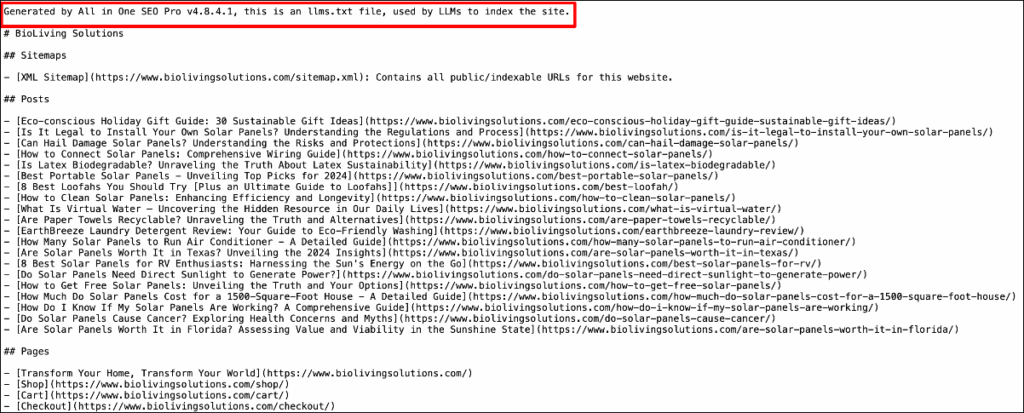
To boost your chances of ranking in AI Overviews, add an llms.txt file in the main folder of your website, just like you would with a robots.txt file. In this file, you can tell AI bots (like Gemini, Anthropic, or OpenAI) what they can and cannot use from your site. Plus, the llms.txt file helps them understand your content better and know which sections are more important.
Fortunately, if you’re an AIOSEO user, you can easily add an llms.txt file to your website, even if you have no technical knowledge. This is because the plugin has an easy-to-use LLMs.txt Generator. This powerful tool creates and adds an llms.txt file to your site with a single click.
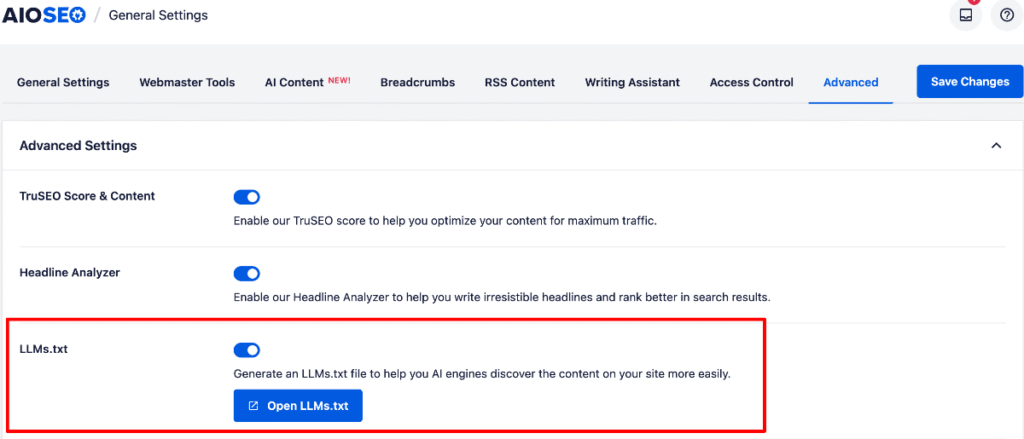
The beauty of this feature is that you don’t even need any technical knowledge to add an llms.txt file to your site.
3. Answer Specific, Intent-Focused Questions
When people search online, they often ask very specific questions. Google’s AI Overviews are designed to answer these questions directly. So, a good way to get your content into an AI Overview is to answer your target audience’s questions clearly and directly on your website.
To do this, you must first identify your audience’s pain points. This process will help you find the specific questions your audience is asking. You can use keyword research tools like LowFruits for this. Alternatively, you can use tools like “People Also Search for” (in Google search results), AnswerThePublic, or AlsoAsked.
Once you’ve identified your audience’s pain points, give short, clear answers to these questions. Put these answers under headings (like H2s or H3s) and in easy-to-read paragraphs. For example, if someone searches “how to make a perfect chocolate chip cookie,” your article could have a heading “How to Make Perfect Chocolate Chip Cookies” followed by a step-by-step answer with the appropriate subheadings.
Remember, AI Overviews usually cite summaries. This means if your content is written in this format, your chances of ranking are higher.
4. Target Long-Tail and Niche Keywords
If you want to increase your chances of getting featured in Google AI Overviews, long-tail and niche keywords are your secret weapon.
Unlike broad, high-competition terms like “camera cleaning” or “SEO tips,” long-tail keywords are more specific, less competitive, and often reveal stronger search intent. They’re the kinds of queries people ask when they’re looking for direct answers, exactly what AI Overviews are designed to deliver.
Why Long-Tail Keywords Work for AI Overviews
There are several reasons why long-tail keywords are your best bet for ranking in Google’s AI Overviews. One of them is that they signal clear intent. Someone searching “how to clean a DSLR lens with vinegar” is likely looking for a detailed, actionable answer, not a generic article.
Another reason is that they trigger featured snippets and other SERP features like People Also Ask (PAA), and others.
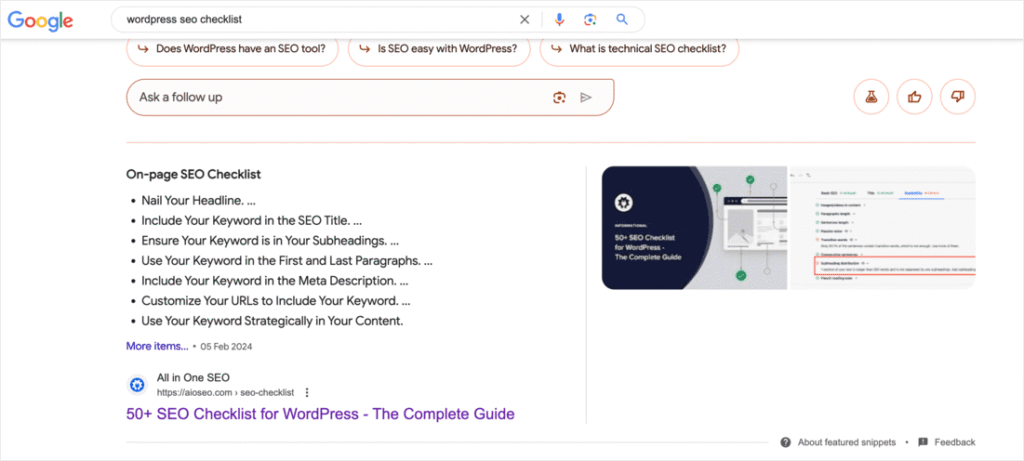
Google loves pulling responses for very specific questions in SERP features. Optimizing for these makes it easier for your content to be chosen for AI Overviews, too.
Finally, long-tail keywords help you stand out in niche markets. Even if you're in a competitive industry, targeting ultra-specific subtopics gives you an edge to rank higher.
How to Find Long-Tail, Low-Competition Keywords
Good news: You don’t have to guess. You can use keyword research tools to uncover long-tail gems. A great example is LowFruits.

LowFruits is a keyword research tool built to uncover low-competition keywords, which are perfect for landing quick SEO wins. It spots Weak Spots on search engine results pages (SERPs), helping you target terms with a better chance of ranking.
You’ll also get helpful insights into search volume, keyword difficulty, and related terms to guide your strategy.
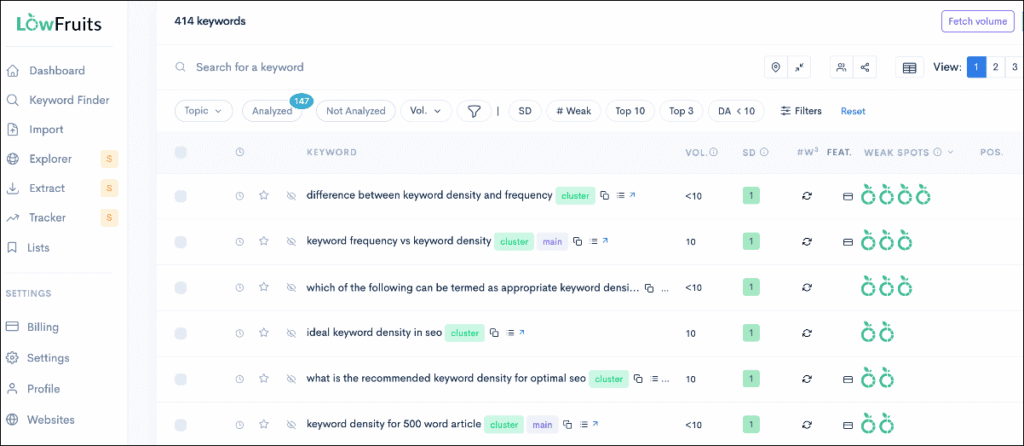
Focusing on keywords with lower competition increases your chances of ranking higher in search results more quickly.
5. Optimize for Generative Engine Optimization (GEO)
Generative engine optimization (GEO) is the new frontier of search optimization. It’s tailored specifically for how AI models (like Google's Gemini or OpenAI’s ChatGPT) read, understand, and summarize content.
While traditional SEO focused on keywords, backlinks, and metadata, GEO emphasizes clarity, structure, and factuality. These are the things AI cares about most when deciding what to include in an AI Overview.
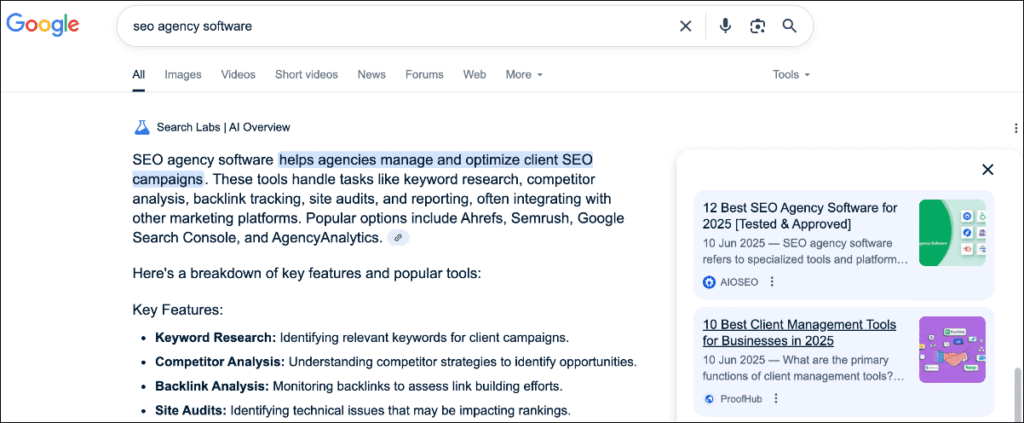
Here’s how to optimize your content for GEO:
Use Simple, Factual Language
AI tools are trained to favor clear and unambiguous text. That means:
- Write at a grade 6–8 reading level (tools like Hemingway can help).
- Avoid overly complex jargon unless your audience demands it.
- Use active voice and get to the point quickly.
- Double-check facts. AI will often ignore or misinterpret vague or outdated information.
The simpler your content is to read, the more likely you are to be featured in Google’s AI Overviews.
Format for Skimmability
AI pulls information in chunks. If your content is buried in dense paragraphs, it’s less likely to be surfaced. Structure matters.
Use:
- Short paragraphs (1–3 sentences max)
- Clear subheadings (H2s and H3s that state questions or key topics)
- Bullet points and numbered lists for instructions, features, or comparisons
- Tables for comparing products or features
- Bold text to highlight definitions or key takeaways
This structure is easy for both humans and AI to digest.
6. Add First-Hand Expertise and E-E-A-T Signals
Google (and other search engines) are getting smarter at judging the quality and trustworthiness of content. That’s where Google’s E-E-A-T comes in, which stands for Experience, Expertise, Authoritativeness, and Trustworthiness.
In fact, Google AI Overviews are heavily influenced by content that demonstrates real-life experience and verifiable expertise. If your content lacks these signals, it’s less likely to be chosen, even if it's technically accurate.
Here’s how to bake E-E-A-T into your content:
- Share real-life examples: Tell stories or show examples from your own experience. For instance, if you are writing about dog training, you could share a story about how you trained your own dog.
- Include who you are: Add a short bio about yourself or the author, showing your skills and background. This helps Google see you as an expert.
- Add trust signals: Include things like reviews from happy customers, mentions in other trusted articles, or links to studies that back up your claims. These things tell Google and its AI that your content is reliable.
Regarding author bios, you can beef up your E-E-A-T signals using AIOSEO’s Author SEO module.
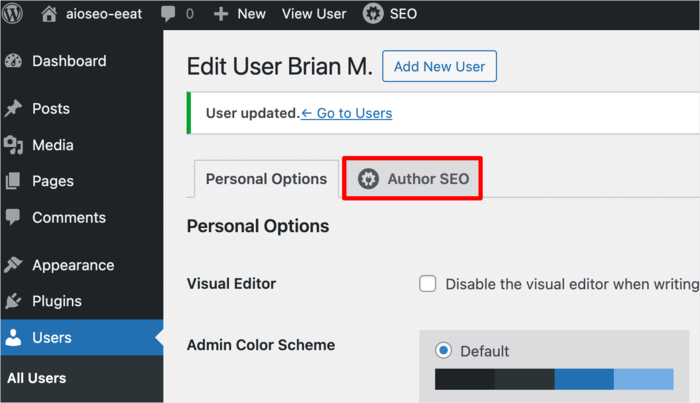
This addon makes it easy to create author bios that build credibility, highlight expertise, and boost your visibility in search results. You can even add information such as your experiences, awards, languages you speak, and more.

The best part is that the Author SEO module adds relevant schema markup for this information, making it easy for search engines to understand. As a result, you tick another box in the requirements for ranking in AI Overviews.
7. Use Structured Data (Schema Markup)
Structured data is code you add to your website to make your content easier for search engines to understand. It uses a standardized vocabulary, called schema markup, to define details about your pages. For example, you can use it to tell Google that a specific page is a recipe, a product, or a local business. The code is hidden from your visitors but helps search engines display your content in more useful ways, like in “rich snippets.”
Why Schema Matters for AI Overviews
AI Overviews rely on clearly defined, structured content to generate accurate and helpful summaries. When you add schema markup to your pages, you're giving Google's AI exactly what it needs to:
- Identify answers to common questions.
- Pull step-by-step instructions.
- Highlight key facts or features.
- Understand product details.
By using schema, you're not just improving your technical SEO—you’re making your content AI-ready.
While schema markup involves code, adding it to your site doesn’t require you to have any coding knowledge. You can easily add it using AIOSEO’s next-gen Schema Generator.
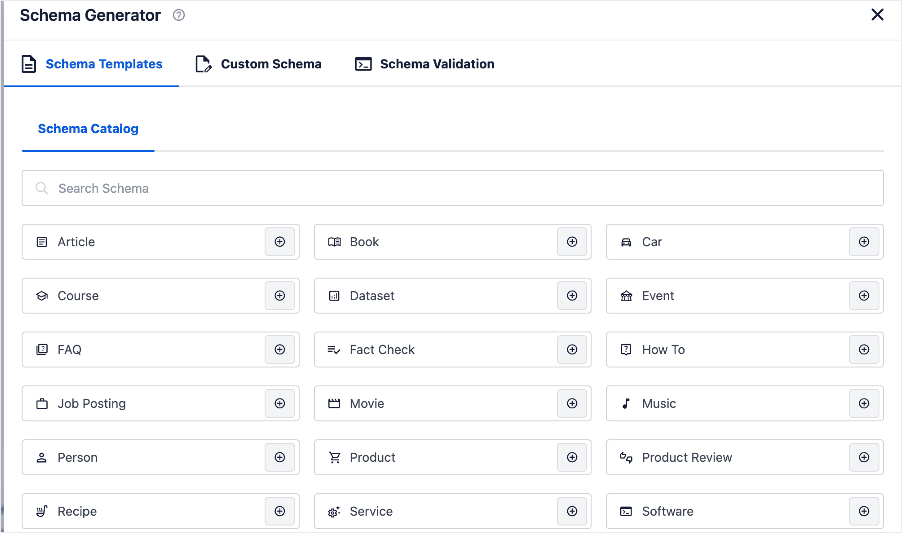
You can use it to add different schema types to your content. For example, if you publish a recipe, you can add recipe schema to tell Google that it's a recipe, what the ingredients are, and how long it takes to cook.
Need detailed steps on adding schema markup?
Check out our tutorial on how to add schema markup in WordPress.
8. Keep Your Content Fresh and Updated
When it comes to AI Overviews (and search rankings in general), content freshness matters.
According to Google’s leaked search algorithm documents, it’s because search engines are designed to deliver timely and reliable information. That means if your content is outdated, even if it was ranking well before, it’s likely to get pushed down or ignored in favor of newer, more relevant sources. This is called content decay.
Keeping your content up to date is one of the simplest (yet most overlooked) ways to stay visible in AI Overviews.
Why Fresh Content Wins
Search engines prefer current information because:
- User expectations have changed. People want the latest data, not last year’s advice.
- AI systems prioritize relevance, and outdated posts often lack current context.
- Google uses freshness signals (like updated timestamps, changed content, and revised links) to decide which pages are most relevant for AI-generated summaries.
Even small updates can send a strong freshness signal to Google’s algorithms.
For more tips, check out our tutorial on optimizing existing content. You may also want to take a look at my favorite content optimization tools.
Keeping your content updated isn’t just good for rankings, it’s good for your readers. It builds trust, reinforces your authority, and increases the chances your content will be selected for AI Overviews.
9. Write in a Natural, Conversational Tone
One of the easiest ways to stand out in Google’s AI Overviews is by writing like a human, not a textbook.
AI systems are trained to surface content that’s clear, relatable, and easy to understand. If your writing feels robotic, overly technical, or full of fluff, it’s less likely to be selected for an AI summary—no matter how accurate it is.
The best content reads like helpful advice from a friend.
Why Conversational Writing Works
Writing in a conversational tone doesn’t just make your content more enjoyable. It makes it more effective. Whether it’s a human reader or Google’s AI scanning your page, a friendly, natural style helps your message land clearly and confidently.
Here are a few more reasons why adopting a conversational writing style is beneficial:
- AI is built to mimic human conversation. When your content matches that tone, it’s easier for AI to summarize and pull into Overviews.
- It boosts user engagement. Readers are more likely to stay on your page (and trust you) when the tone feels approachable.
- It improves accessibility. Conversational writing helps non-experts understand even complex topics, which increases your reach.
When your content sounds natural and feels easy to read, you're not just writing for readers, you’re writing for AI too.
10. Build Topical Authority
If you want to rank in the age of AI Overviews, you need more than just one great blog post. You need to show Google (and AI systems) that you’re a trustworthy, go-to expert on the entire topic.
That’s where topical authority comes in.
What Is Topical Authority?
Topical authority means demonstrating deep, consistent expertise across a subject. Instead of publishing one-off blog posts on random topics, you create clusters of high-quality, interlinked content that explore a subject from every angle.
To build topical authority, structure your content using topic clusters and cornerstone content.
- Topic clusters are groups of related blog posts that dive into subtopics (e.g., lens cleaning, sensor care, storage tips).
- Cornerstone content is the main hub. This is a comprehensive guide that links out to all the cluster content.
The result? Google starts viewing your site as a reliable resource on a particular subject. And AI Overviews are more likely to pull your content because it’s surrounded by a web of supporting information.
Once your cluster content is live, interlink it all together to help search engines crawl and understand the relationships.
AIOSEO’s Link Assistant makes this easy. It automatically suggests relevant internal links and helps you add them with just a few clicks—no manual searching required.
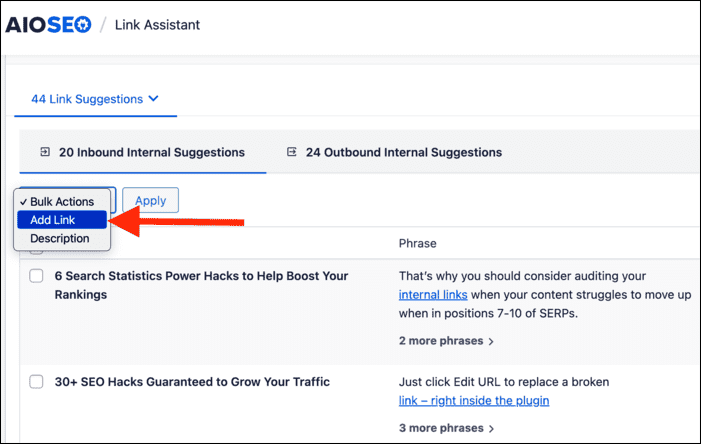
Why internal linking matters:
- Improves user navigation and engagement
- Helps Google see your site structure more clearly
- Increases your chances of being featured in AI Overviews for multiple related queries
By building out comprehensive topic clusters and linking them properly, you’re not just helping users. You’re also training AI engines to trust your expertise. Over time, this boosts your chances of ranking across an entire niche instead of a single keyword.
11. Earn High-Quality Backlinks
Backlinks might feel like old-school SEO, but guess what? They still matter a lot, especially when it comes to earning trust with both Google and AI-powered Overviews.
AI systems (just like traditional search engines) use backlinks as a signal that your content is reliable, well-regarded, and worth featuring. Pages with strong, reputable links are more likely to be summarized or cited in AI-generated answers.
Why Backlinks Still Matter in the Age of AI
Backlinks aren’t just for traditional SEO. They play a key role in how AI systems evaluate and surface content, too. If you want to show up in AI Overviews, earning high-quality backlinks is still one of the smartest moves you can make. That’s because they:
- Act as digital endorsements. When respected sites link to your content, it tells AI engines, “Hey, this source is trustworthy.”
- Boost topical authority. Backlinks from niche-relevant sites help establish you as an expert in your field.
- Increase crawlability and discoverability. The more external links pointing to your site, the more likely it is that AI systems will find and understand your content.
In short, backlinks build both human and machine trust. And when AI trusts your site, it's far more likely to feature your content front and center.
Check out our ultimate link building guide for tips on building impactful backlinks.
12. Increase Your Brand Visibility Across the Web
The more your brand shows up online, the more familiar and trustworthy it looks to both users and AI.
AI Overviews don’t just pull from one page. They consider your entire digital footprint. That includes your presence on social media, YouTube, podcasts, forums, and review sites.
This is why building a robust online presence is essential to ranking in Google AI overviews.
So, how do you boost brand visibility for AI and SEO?
Be active on relevant platforms.
Share your content (or repurposed versions of it) on platforms where your audience hangs out. Examples include LinkedIn, Reddit, Twitter/X, Facebook Groups, or niche forums.
AIOSEO’s AI Content feature can help you repurpose your content for these different platforms. This tool uses your existing copy and AI credits to generate new content for social media, email, metadata, and more.
Check out our list of the best AI content generators for more options.
Claim and Optimize Branded Profiles
Fill out your profiles on places like Google Business, Crunchbase, GitHub, or other industry-specific directories. Use consistent brand messaging and keywords across all platforms.
Check out our article on using your Google Business Profile to boost your SEO.
Get Mentioned (Even Without Links)
AI can recognize brand mentions even if they don’t include a hyperlink. Try to land mentions on trusted sites, podcasts, or news articles. Ahrefs recently ran a study to see which search factors corresponded the most with higher brand visibility in AI Overviews. Surprisingly, online brand mentions showed the strongest correlation to being cited by AI.
Answer Questions on Platforms Like Quora or Reddit
Providing value in relevant threads can build brand awareness and even drive traffic, especially if your answers get upvoted or cited. Look for questions related to your niche and provide helpful, detailed responses that link back to your content (when appropriate).
Over time, this strategy positions you as a trusted voice in the community. AI engines can pick up on these signals, especially if your responses appear on authoritative threads or get referenced elsewhere online.
A word of advice? Make sure your contributions are genuinely helpful, not overly promotional. This will create a more authentic experience in the online community of your choice.
The goal of increasing your brand’s visibility isn’t just exposure—it’s recognition. When AI sees your brand pop up consistently in trustworthy places, it’s more likely to feature your content in Overviews and treat your site as a reliable source.
Rank in Google’s AI Overviews and Win at AI SEO
AI Overviews are changing how people find and trust content online. And brands that adapt early will have the edge. By focusing on clarity, structure, expertise, and trust signals, you’re optimizing for the future of search.
Don’t wait for everyone else to catch on. Start implementing these strategies today, and you’ll be well ahead of the curve when it comes to AI-driven visibility.
I hope this post helped you know how to rank in Google AI Overviews. You may also want to check out other articles on our tutorial on using an AI Content writer in WordPress or our list of the best AI SEO tools.
If you found this article helpful, then please subscribe to our YouTube Channel. You’ll find many more helpful tutorials there. You can also follow us on X (Twitter), LinkedIn, or Facebook to stay in the loop.
Ranking in Google AI Overviews: Your FAQs Answered
What are Google AI Overviews?
Google AI Overviews are brief summaries that appear at the top of search results. Instead of linking to just one site, Google uses AI to scan multiple pages, extract key details, and generate a comprehensive answer. The idea is to give users the info they need without clicking through.
Why is it important to rank in Google’s AI Overviews?
Getting featured in a Google AI Overview can instantly boost your visibility, placing your content above traditional search results—even if you're not ranked #1. It also builds instant credibility, as being selected by Google's AI signals trust and expertise to users.
What is the best tool to help me rank in Google’s AI Overviews?
The best tool to help you rank in Google’s AI Overviews is All In One SEO. It has many features that help you implement SEO best practices, including those that make your content favorable to search engines. A great example is the automatic implementation of llms.txt. This makes it easier for Google’s AI systems to index your content and show it in AI Overviews.
Disclosure: Our content is reader-supported. This means if you click on some of our links, then we may earn a commission. We only recommend products that we believe will add value to our readers.
